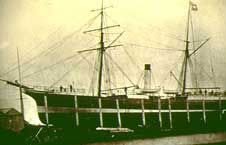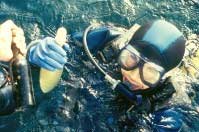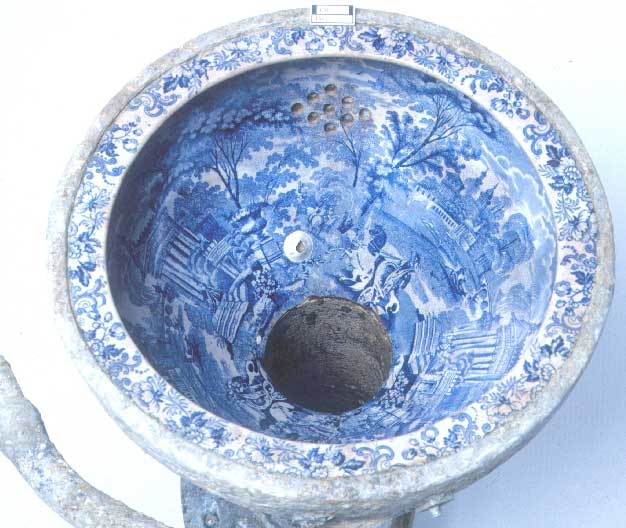|
SS City of Launceston, a short life
SS City of Launceston, but a small 368 ton Scottish built steamer was constructed in 1863 for the new Launceston and Melbourne Steam Navigation Company, in fact, the first regular shipping link between Northern Tasmania and the Australian mainland. Her role to ferry passengers and freight across one of the nastiest stretches of water to be found anywhere, Bass Strait.
A short life. Within about an hour the ship collided with the incoming 500 ton ship SS Penola out of Adelaide and under the command of Captain Snewin. Penola rammed into the starboard side of the City of Launceston, her bow penetrating the Captain's cabin and water started to rush into the stricken vessel. All 38 passengers and 24 crew were rescued by Penola, before City of Launceston slipped below the surface to settle on the bottom of Port Phillip Bay. Unique attempt to salvage the sunken ship. The English mail was recovered, but only a few other items - a bag, a parcel, five boxes of passengers' belongings and two cases of merchandise - were ever retrieved. For several months after the collision, attempts were made to salvage the ship using lifting chains. The Argus, a Melbourne daily paper on September 26th. 1866 reported about the Maquay Lifting Device. It is described as having a canvas bag with a capacity of 5.75 cubic feet, plus an iron cylinder weighing 3 hundred weight, or 132 kilograms in today's measurements. Within this cylinder were zinc cuttings which were half covered by water, a bottle of sulphuric acid was added, and so fixed, that pulling on a line back to the surface would break the bottle to release the acid. That then produced chemical action produced hydrogen gas, as it flowed into the canvas bag it was designed to create enormous lifting power, some 17 iron cylinders have since been located aboard City of Launceston. All very well in theory, but in fact it did not work in this case, and the ship lay peacefully in her watery grave for the next 115 years. First Historic Wreck. Intact from the keel to the deck and sitting upright in a silty seabed in 21 metres of water, the shipwreck has been the subject of intensive archaeological investigations since 1997, with funding provided by the Heritage Council. A national team of maritime archaeological and conservation experts under the direction of Heritage Victoria's Maritime Heritage Unit has conducted a deck and silt survey, trial excavation, stabilisation and a full corrosion assessment of the ship's hull. Artifacts recovered. Each of the artefacts found on board - from the crockery still neatly stacked inside the remains of a cupboard and a porcelain vanity basin to a chest filled with fabric, bottles of schnapps and decorated porcelain chamber-pots - has a rich story to tell about Australia's past.
Working in murky conditions where visibility could be reduced to about a metre, teams of up to five people carefully recorded each item in situ. Using a water dredge to vacuum away silt, the items were then removed, tagged and brought to the surface before being taken to the excavations base at Portarlington. Carefully packed, they were then transported to a Melbourne lab where the process of preservation - which for some wooden artefacts can take several years to complete - began. As well as the latest finds, the lab has an array of others brought up on excavations carried outover the past few years: buttons, champagne bottles and portholes.
Perhaps the most famous is the blue and white porcelain toilet believed to be one of the original flushing water closets manufactured by an Englishman who rejoices in the lovely name of Thomas Crapper.
This object is complete but fractured. The artefact has undergone conservation and is stable.The blue and white ceramic toilet bowl is highly ornate. The decoration includes a landscaped garden flanked by pavilions and horses and carts. The lead casing contains copper alloy attachments, fastenings and a pump. Penola lengthened then wrecked in 1887. This closed the chapter on an early collision in Port Phillip Bay where at the subsequent inquiry the City of Launceston was given the blame for this marine disaster. |




